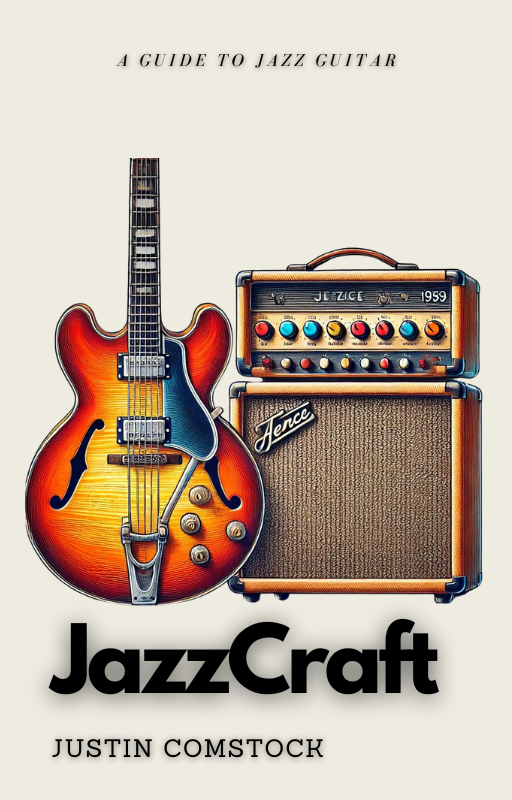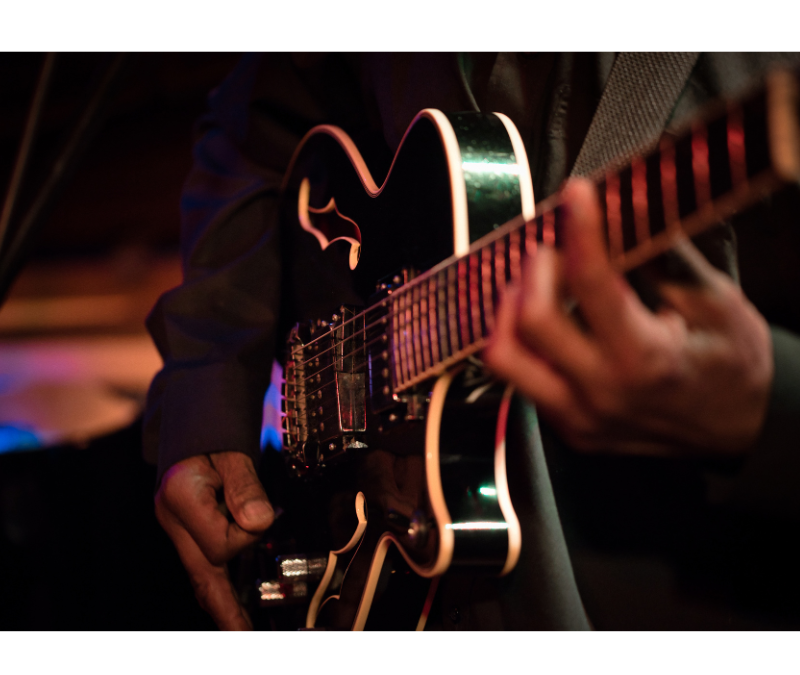Learning jazz guitar chords can be a game-changer for any guitarist, adding complexity, color, and creativity to your playing. But jazz chords are a different beast compared to typical rock or pop chords. In this guide, we’ll cover some core jazz chords and break down unique ways to practice them so you can expand your skills and make your playing sound even smoother.
Key Jazz Guitar Chords Every Guitarist Should Know
Jazz uses a variety of extended and altered chords. These are the primary types you’ll want to get under your fingers:
- Major 7th (e.g., Cmaj7) – Smooth and mellow, major 7th chords bring warmth to jazz harmonies.
- Minor 7th (e.g., Cm7) – A jazzy, minor sound that’s less intense than a pure minor chord.
- Dominant 7th (e.g., G7) – Often used in blues, dominant 7th chords are essential for jazz, giving tension that resolves beautifully.
- 9th, 11th, and 13th Chords – These extensions add layers of depth and complexity, defining the “jazz sound.”
- Diminished and Half-Diminished Chords (e.g., Bdim7, Bm7b5) – Known for their suspenseful tone, these chords add drama and intrigue to progressions.
Understanding these chords will give you a strong foundation for jazz. Now, let’s look at some practice techniques that make learning these chords more effective and enjoyable.

Download the ebook “JazzCraft”!
JazzCraft is the essential guide to mastering jazz guitar improvisation, tailored for players of all levels. This ebook is filled with detailed lessons, advanced techniques, and real-world examples that show you how to navigate jazz progressions, craft dynamic solos, and develop your unique voice as a jazz guitarist. Whether you’re exploring complex scales, adding harmonic richness, or learning how to improvise with confidence, JazzCraft equips you with the tools to unlock your full potential and solo like a true jazz pro.
Download Now
1. Learn Chords in Multiple Positions Across the Neck
The magic of jazz chords lies in their versatility and variation. Instead of sticking to just one chord shape, learn each jazz chord in several positions along the fretboard.
- Practice Idea: Pick a chord type (e.g., Gm7) and play it in at least four different positions. Focus on using inversions (changing the order of notes in the chord) to explore new voicings that can bring life to even a simple chord.
2. Master the ii-V-I Progression
The ii-V-I progression is a jazz standard in almost every song. Practicing this progression in all keys will prepare you for a wide range of tunes.
- Exercise: Start with a common key (like C major), playing Dm7 – G7 – Cmaj7. Gradually work your way around the circle of fifths, moving this progression through each key. Try using different inversions to get comfortable moving smoothly through the changes.
3. Experiment with Guide Tones
Guide tones (usually the 3rd and 7th) are crucial in jazz as they outline the chord’s character and help create smooth transitions.
- Practice Idea: Focus on just the 3rd and 7th for each chord in a progression. Move through a ii-V-I while highlighting these tones, noticing how they lead you naturally from one chord to the next.
4. Use Chord Substitutions to Add Flavor
Jazz players often use chord substitutions to add variety and complexity to simple progressions. Try replacing a V chord with a tritone substitution (a dominant chord a tritone away from the original).
- Exercise: In a ii-V-I, substitute the V chord (e.g., G7) with a tritone chord like Db7. This creates a unique tension that resolves beautifully back to the I chord, adding a jazzier flavor to your playing.
5. Practice Moving Chords Through the Circle of Fifths
Using the circle of fifths is an efficient way to learn jazz chords across all 12 keys, which is important for jazz’s key-changing nature.
- Exercise: Pick a chord type (e.g., Maj7) and play it in each key, moving through the circle of fifths. This will deepen your familiarity with the chord shapes and the fretboard, preparing you for songs that switch keys frequently.
6. Work on Chord Melody Playing
Chord melody is a technique where you play both chords and melody simultaneously, creating a rich, full sound. Jazz guitarists use this to arrange tunes in a way that lets them be a one-person band.
- Practice Tip: Start with a simple jazz standard like “Autumn Leaves.” Focus on playing the melody with the top notes of your chords. As you get comfortable, explore different voicings and chord substitutions.
7. Use a Metronome to Practice Swing Rhythms
Rhythm is key in jazz, and practicing jazz chords with a metronome helps you internalize the swing feel. Jazz has a different rhythm style than straight beats, and working with a metronome can help develop that “swing.”
- Exercise: Set your metronome to a slower beat, around 60 BPM, and focus on playing chords on the off-beats. Work on creating a “swing” rhythm by accenting the upbeat, a critical jazz feel that will make your playing sound authentic.
8. Record Yourself to Track Progress
Recording is one of the most underrated practice tools out there. By recording yourself, you can hear where your rhythm, timing, and tone need work, giving you an honest look at your playing.
- Tip: Record yourself playing a progression, like a ii-V-I. Play it back and listen for things you’d like to improve—whether that’s smoother transitions, a clearer tone, or better timing.
9. Join a Community of Jazz Guitarists
Learning jazz chords and theory can feel overwhelming at times, but joining a community of like-minded musicians makes a big difference. You’ll find inspiration, support, and plenty of tips from others who are also on the jazz guitar journey.
Join the Guitar Freaks Hangout on Discord to share progress, swap tips, and get feedback from fellow guitarists who love jazz! Plus, you’ll find a supportive network to stay motivated and excited about your practice.
Mastering jazz guitar chords takes patience and practice, but with these techniques, you’re well on your way to sounding smoother and more versatile. Mix up your practice routine by exploring different voicings, experimenting with rhythms, and always challenging yourself to try new keys and techniques. With time, you’ll be bringing out the full potential of jazz guitar chords in your playing.

Download the ebook “JazzCraft”!
JazzCraft is the essential guide to mastering jazz guitar improvisation, tailored for players of all levels. This ebook is filled with detailed lessons, advanced techniques, and real-world examples that show you how to navigate jazz progressions, craft dynamic solos, and develop your unique voice as a jazz guitarist. Whether you’re exploring complex scales, adding harmonic richness, or learning how to improvise with confidence, JazzCraft equips you with the tools to unlock your full potential and solo like a true jazz pro.
Download Now










